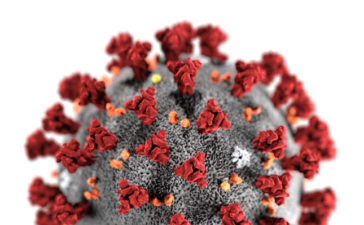Coronaviruses are types of viruses that typically affect the respiratory tracts of birds and mammals, including humans. Doctors associate them with the common cold, bronchitis, pneumonia, severe acute respiratory syndrome (SARS), and COVID-19. They can also affect the gut.
These viruses are typically responsible for common colds more than serious diseases. However, coronaviruses are also behind some more severe outbreaks.
Over the last 70 years, scientists have found that coronaviruses can infect mice, rats, dogs, cats, turkeys, horses, pigs, and cattle. Sometimes, these animals can transmit coronaviruses to humans.
Most recently, authorities identified a new coronavirus outbreak in China that has now reached other countries. It has the name coronavirus disease 2019, or COVID-19.
What is a coronavirus?
Researchers first isolated a coronavirus in 1937. They found a coronavirus responsible for an infectious bronchitis virus in birds that had the ability to devastate poultry stocks.
Scientists first found evidence of human coronaviruses (HCoV) in the 1960s in the noses of people with the common cold. Two human coronaviruses are responsible for a large proportion of common colds: OC43 and 229E.
The name “coronavirus” comes from the crown-like projections on their surfaces. “Corona” in Latin means “halo” or “crown.”
Among humans, coronavirus infections most often occur during the winter months and early spring. People regularly become ill with a cold due to a coronavirus and may catch the same one about 4 months later.
This is because coronavirus antibodies do not last for a long time. Also, the antibodies for one strain of coronavirus may be ineffective against another one.
COVID-19
In 2019, the Centers for Disease Control and Prevention (CDC) started monitoring the outbreak of a new coronavirus, SARS-CoV-2, which causes the respiratory illness now known as COVID-19. Authorities first identified the virus in Wuhan, China.
Since then, the virus has spread to other countries, both in and outside Asia, leading the World Health Organization (WHO) to declare this as a pandemic.
As of March 23, more than 340,000 people have contracted the virus worldwide, causing over 14,000 deaths.
In the U.S., the virus has affected over 35,000 people, resulting in more than 450 deaths.
The first people with COVID-19 had links to an animal and seafood market. This fact suggested that animals initially transmitted the virus to humans. However, people with a more recent diagnosis had no connections with or exposure to the market, confirming that humans can pass the virus to each other.
Information on the virus is scarce at present. In the past, respiratory conditions that develop from coronaviruses, such as SARS and MERS, have spread through close contacts.
On February 17, 2020, the Director-General of the WHO presented at a media briefing the following updates on how often the symptoms of COVID-19 are severe or fatal, using data from 44,000 people with a confirmed diagnosis:
| Stage of severity | Rough percentage of people with COVID-19 |
| Mild disease from which a person can recover | More than 80% |
| Severe disease, causing breathlessness and pneumonia | Around 14% |
| Critical disease, including septic shock, respiratory failure, and the failure of more than one organ | About 5% |
| Fatal disease | 2% |
The WHO reports that the two groups most at risk of experiencing severe illness due to a SARS-CoV-2 infection are older adults, defined as “over 60 years old”, and individuals who have other health conditions that compromise their immune system.
According to the CDC, children are not at higher risk for COVID-19 than adults.




